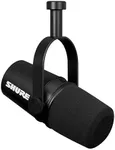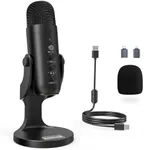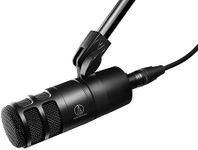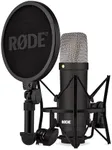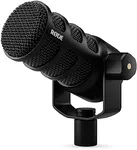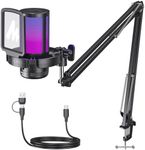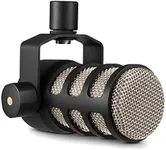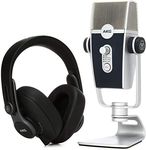Buying Guide for the Best Podcasting Microphones
Choosing the right podcasting microphone is essential for achieving clear, professional-sounding audio. The right microphone can make your voice sound natural and engaging, while the wrong one can introduce noise or make you sound distant. When shopping for a podcasting microphone, it's important to understand the key features that affect sound quality, ease of use, and compatibility with your recording setup. By focusing on your recording environment, the number of people involved, and your technical comfort level, you can find a microphone that fits your needs and helps you create great content.Microphone Type (Dynamic vs. Condenser)Microphone type refers to the technology used to capture sound. Dynamic microphones are generally more rugged and less sensitive, making them great for untreated rooms or environments with background noise. Condenser microphones are more sensitive and capture a wider range of frequencies, which can result in richer, more detailed sound, but they also pick up more background noise. If you record in a quiet, controlled space, a condenser microphone can give you a more professional sound. If you record in a noisy or echoey room, a dynamic microphone is often the better choice.
Connection Type (USB vs. XLR)Connection type determines how the microphone connects to your recording device. USB microphones plug directly into your computer and are easy to set up, making them ideal for beginners or solo podcasters. XLR microphones require an audio interface or mixer, which adds complexity but offers better sound quality and more control. If you want a simple, plug-and-play setup, go for USB. If you plan to upgrade your equipment or record multiple people, XLR is more flexible and professional.
Polar PatternThe polar pattern describes how a microphone picks up sound from different directions. Cardioid is the most common for podcasting, as it focuses on sound from the front and reduces noise from the sides and back. Omnidirectional picks up sound equally from all directions, which can be useful for group discussions but may capture more background noise. Bidirectional (figure-8) picks up from the front and back, useful for interviews. Choose a polar pattern based on your recording setup: cardioid for solo or focused recording, omnidirectional for roundtable discussions, and bidirectional for face-to-face interviews.
Frequency ResponseFrequency response is the range of sound frequencies a microphone can capture, usually measured in hertz (Hz). A wider frequency response can capture more detail, especially in the low and high ends of your voice. For podcasting, look for a microphone that covers the typical vocal range (about 80 Hz to 15 kHz). If you have a deep voice, a microphone with good low-end response will sound fuller. If you want to capture more vocal detail, a wider high-end response is helpful.
Sensitivity and Noise HandlingSensitivity refers to how well a microphone picks up quiet sounds. High sensitivity can capture more detail but may also pick up unwanted background noise. Noise handling is about how well the microphone rejects unwanted sounds. If you record in a quiet, treated space, higher sensitivity can be an advantage. If you record in a noisy environment, look for a microphone with lower sensitivity and good noise rejection to keep your recordings clean.
Build Quality and Mounting OptionsBuild quality affects durability and how well the microphone withstands regular use. A sturdy microphone will last longer and resist damage from accidental bumps. Mounting options, such as included stands or shock mounts, help reduce vibrations and handling noise. If you plan to move your microphone often or record in different locations, prioritize a robust build and flexible mounting options. If your setup is stationary, a basic stand may be sufficient.

